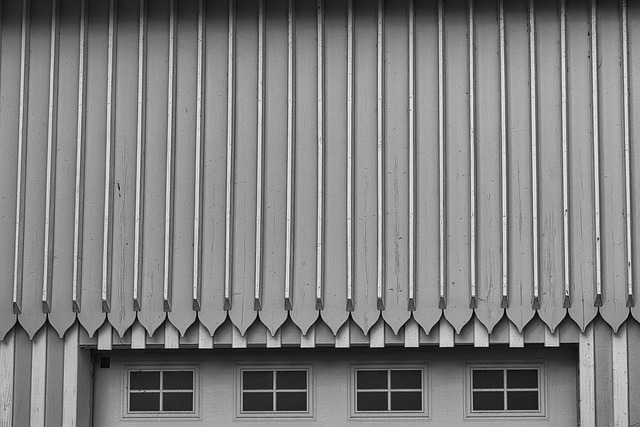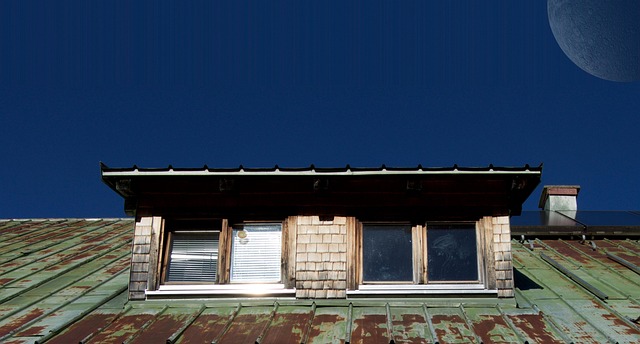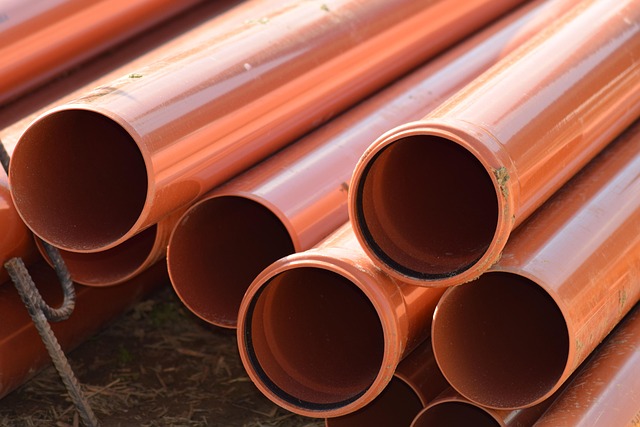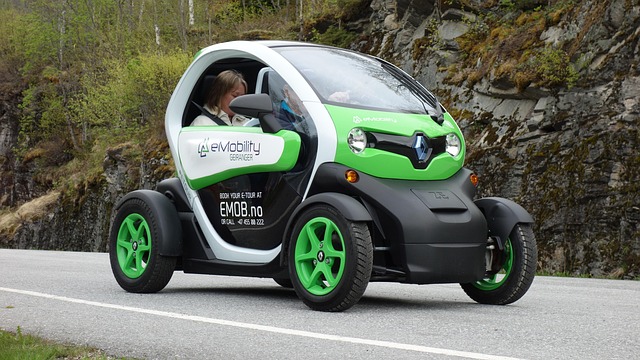The global trend towards eco-friendly roofing reflects rising environmental awareness, offering long-lasting, natural solutions that reduce carbon footprints. Traditional materials like asphalt shingles are replaced by renewable options like bamboo and plant-based composites, providing excellent durability, insulation, and weather resistance. These choices not only cut down on environmental degradation but also offer financial benefits through longer lifespans and reduced maintenance. Energy-efficient features like cool roofs further decrease carbon footprints and utility bills. Case studies prove the success of these materials in both residential and commercial settings, with recycled content and advanced technologies driving future innovations to create sustainable urban environments.
In today’s eco-conscious world, the choice of roofing materials goes beyond aesthetics. The green revolution has sparked a shift towards sustainable and environmentally friendly options. This article explores the growing trend of eco-friendly roofing, delving into traditional vs. sustainable materials, their benefits, and renewable solutions that offer both durability and energy efficiency. From natural materials to innovative designs, we uncover successful implementations and glimpse into the future of sustainable roofing practices, emphasizing the importance of durable, eco-conscious choices.
Understanding Eco-Friendly Roofing: The Green Revolution

The shift towards eco-friendly roofing materials signifies a significant step in the global green revolution. As environmental consciousness grows, so does the demand for sustainable alternatives to traditional roofing options. This movement not only reduces the carbon footprint of construction but also offers long-lasting, durable roofing solutions that contribute to a greener planet.
Eco-friendly roofing materials are designed with a focus on minimal environmental impact, utilizing natural resources and innovative technologies. These materials not only reduce waste and energy consumption during manufacturing but also provide exceptional durability, ensuring structures remain protected for years while preserving the surrounding ecosystem.
Traditional vs. Sustainable Roofing Materials

In the pursuit of sustainability, the choice of roofing materials plays a significant role in shaping the environmental impact of our homes and buildings. Traditional roofing options often rely on resources that contribute to environmental degradation, such as asphalt shingles derived from petroleum products. These materials are not only non-biodegradable but also require extensive energy for production and have a high carbon footprint.
On the contrary, sustainable roofing materials offer an eco-conscious alternative with improved durability and reduced environmental strain. Made from renewable resources like bamboo, recycled metal, or plant-based composites, these innovative options provide excellent insulation, resistance to extreme weather conditions, and longer lifespans compared to traditional counterparts. By choosing durable roofing materials that are environmentally friendly, homeowners and builders can contribute to a greener planet while enjoying the benefits of robust and long-lasting protection for their structures.
Benefits of Choosing Eco-Conscious Roof Options

Choosing eco-conscious roof options offers a multitude of benefits, not just for the environment but also for property owners. One of the key advantages is sustainability; these materials are typically derived from renewable resources or recycled content, reducing the carbon footprint associated with traditional roofing. They often have a longer lifespan compared to conventional alternatives, which translates into fewer replacements over time, saving you money and minimizing construction waste.
Additionally, eco-friendly roofs can significantly enhance energy efficiency in homes and buildings. Many green roofing options provide excellent insulation, helping regulate indoor temperatures and reducing the need for excessive heating or cooling. Some even have cool-roofing properties, reflecting sunlight and lowering peak energy demand during hot seasons. This not only contributes to a healthier planet but also leads to lower utility bills for homeowners.
Renewable and Long-Lasting: Top Durable Roofing Solutions

In the pursuit of sustainable living, eco-conscious homeowners and builders are increasingly turning to durable roofing materials that offer both environmental benefits and longevity. Renewable roofing solutions, such as those made from recycled content or plant-based materials, significantly reduce a structure’s carbon footprint. Moreover, these materials are designed to withstand harsh weather conditions, ensuring structural integrity for years to come.
Longevity is a key factor in choosing durable roofing. Materials like metal, tile, and high-quality shingles not only resist decay but also require minimal maintenance. This reduces the need for frequent repairs or replacements, saving money in the long term. With proper installation and regular inspection, these eco-friendly options can contribute to a building’s overall sustainability while providing reliable protection against the elements.
Energy Efficiency in Roof Design: A Key Factor

Energy efficiency is a critical aspect of modern roof design, especially with the focus on sustainable and eco-friendly construction practices. Incorporating energy-efficient roofing materials can significantly reduce a building’s carbon footprint and lower energy costs for homeowners and businesses alike. Durable roofing options, such as recycled metal or cool roofs, play a pivotal role in this regard.
Cool roofs, for instance, are designed to reflect sunlight and absorb less heat, thereby decreasing the amount of energy needed for cooling. This is particularly beneficial in regions with hot climates, where traditional roofs can contribute to excessive indoor temperatures. By choosing durable roofing materials that offer energy-saving properties, builders and designers can create more comfortable living spaces while minimizing environmental impact.
Exploring Natural and Organic Materials for Roofs

In the pursuit of sustainable living, exploring natural and organic materials for roofs is a significant step towards reducing environmental impact. These eco-friendly alternatives offer not just aesthetic appeal but also durability, making them viable choices for modern architecture. Materials such as bamboo, straw bales, and recycled metal not only minimize carbon footprint but also provide excellent insulation, contributing to energy-efficient homes.
Unlike traditional durable roofing materials that rely on synthetic compounds and non-renewable resources, natural options are renewable and biodegradable. For instance, bamboo is renowned for its strength and rapid growth, making it a highly sustainable choice. Straw bales, another organic material, offer exceptional insulation properties while being cost-effective and readily available in many regions. These materials not only enhance the environmental friendliness of buildings but also promote local economies by supporting the cultivation and production of renewable resources.
Case Studies: Successful Eco-Friendly Roofing Implementations

In recent years, numerous successful case studies have demonstrated the feasibility and benefits of eco-friendly roofing implementations. These projects showcase how innovative, sustainable materials can offer both environmental advantages and superior structural performance, serving as durable roofing solutions that stand the test of time. For instance, a notable example involves a residential community that opted for a green roof system, incorporating plants, soil, and a special membrane. This approach not only reduced the building’s carbon footprint but also provided insulation, lowered energy costs, and created a biodiverse urban oasis.
Another case in point is a commercial building that retrofitted its roof with recycled content shingles. This implementation resulted in significant water runoff reduction, minimizing the risk of flooding and erosion. Moreover, these shingles exhibited exceptional resistance to harsh weather conditions, validating their status as durable roofing materials that contribute to long-term cost savings and environmental preservation without compromising aesthetics or structural integrity.
Future Trends in Sustainable Roofing Practices

The future of roofing is green and sustainable, with a growing emphasis on eco-friendly materials that offer both aesthetic appeal and long-term durability. One notable trend is the increased use of recycled content in roofing products. From plastic bottles to asphalt shingles, these repurposed materials are finding new life as durable roofing solutions, reducing waste and minimizing environmental impact.
Additionally, innovative technologies like solar-reflective tiles and cool roofs are gaining traction. These advanced materials not only extend the lifespan of buildings by protecting them from heat damage but also contribute to energy efficiency and reduced carbon footprints. As building codes evolve and consumer preferences shift towards sustainability, we can expect to see even more sustainable roofing practices become the norm, ensuring a greener future for our urban landscapes.
